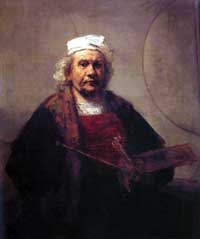The Florida Optometric Association is still in the information collection stage and presently conducting a statewide damage assessment poll of its members following this years historic hurricane season, says its executive director, Kenneth L. Franklin.
Four major hurricanesCharley, Frances, Ivan and Jeannehit Florida within a six-week period beginning August 13.
For some O.D.s, the effects have been merely inconvenient. Monique Cupryn, O.D., says her Tampa practice has mostly been beset by scheduling difficultiesboth patient and staff. She estimates a 40% rate of missed appointments, as patients concentrate on returning home and cleaning up damage.
With all the cleanup under way here, I think for a lot of people routine eye care (that is) non-trauma related has taken somewhat of a back burner, she says.
Employee scheduling, in part, has depended on mandatory evacuations, she says.
Dr. Cupryn says there have been some delays in delivering prescription eye wear and contact lenses to patients, as two of the local labs her practice uses had to shut down or reduce staff due to mandatory evacuations. She has tried to stock up on samples of ophthalmic medications, though she says patients have experienced few delays in obtaining these from pharmacies.
For other Florida O.D.s, the challenges are much greater. The challenges of survival and rebuilding will require a long-term recovery effort by all citizens in the state, Mr. Franklin says. Thus, our optometric physicians have experienced minor damages (missing shingles, downed trees, etc.) to major/total losses (loss of home, loss of business, loss of personal and business income, etc.).
Many of the associations efforts have been targeted toward the Panhandle (Pensacola area), which has been difficult to gain access to, due to loss of power and telephone service, inability to access roadways and excessive damage to transportation systems.
The unknown elements and aftermath of Hurricane Ivan and Hurricane Jeanne remain, and we are unable to provide better information at this time, Mr. Franklin says.
How does this affect patient care? Patients have been able to gain emergency and maintenance health care, depending upon the area of the state that has been cleared of damage and [if the area] allows access, Mr. Franklin says. Our physicians are rendering care and attempting to reopen and rebuild at the same time as citizens are trying to get their homes and offices operational. Again, the survival efforts (food, shelter, ice, water, etc.) have been primary and have disrupted all Florida medical personnels ability to operate other than on an emergency basis.
Mr. Franklin expects to be able to offer more relevant information after the associations statewide damage assessment poll is complete.
Meanwhile, the board of the Florida Optometric Association Charities unanimously authorized $100,000 for the Hurricane Charley Humanitarian Relief Project. Also, Johnson & Johnson, parent company of Johnson & Johnson Vision Care, established a $5 million relief fund to provide cash grants to relief and recovery agencies throughout affected areas of Florida.
Did Rembrandt Have Strabismus?
Seventeenth-century Dutch master painter Rembrandt van Rijn could have been strabismic, according to a recent analysis of his many self-portraits. In 23 out of 24 paintings examined, Rembrandts right eye deviates to the right while his left eye looks straight ahead. (He probably looked in a mirror to paint, so its likely that his left eye was the affected one.) The lack of depth perception may actually have given Rembrandt a professional advantage: Consider that many artists close one eye to render an image in two dimensions. 
Livingstone MS, Conway BR. Was Rembrandt stereoblind? N Engl J Med 2004 Sep 16;351(12): 1264-5.
Photo credit: mystudios.com

